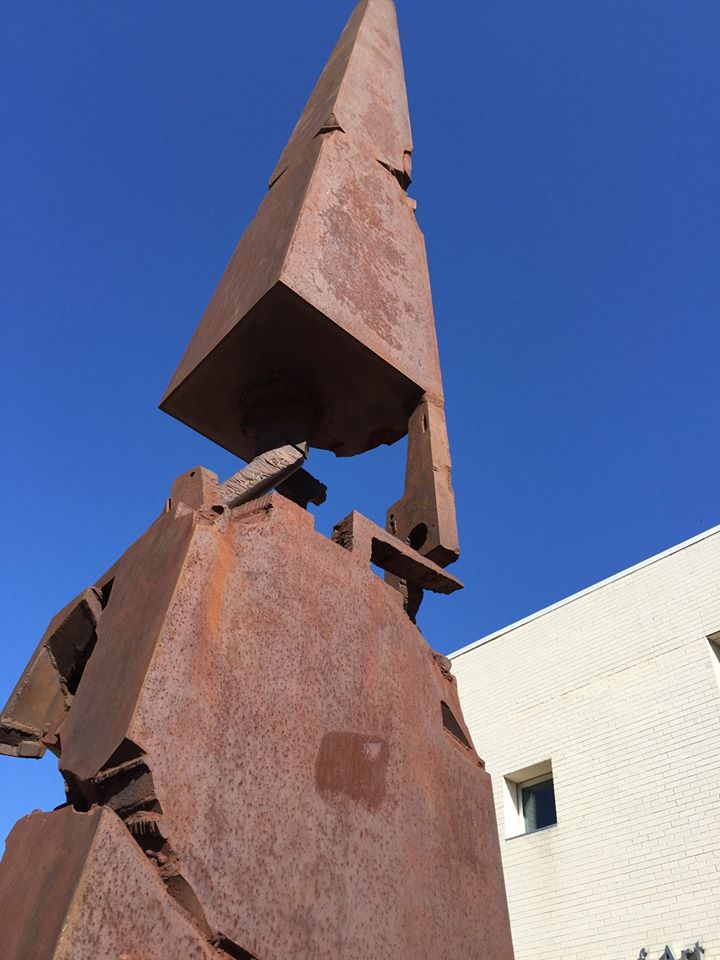From The Collection: Outdoor Edition
We invite you to hop in the car and go for a drive by DuMA. When you get here, pull over and check out our two outdoor sculptures located off 7th Street.

(Left) Dubuque artist John Anderson-Bricker’s sculpture, Hairball, takes inspiration from the distinctive regurgitations of a beloved family cat. Created from heavy industrial materials and covered in a delicate mosaic, Anderson-Bricker’s oversized “hairballs” are suspended in an articulated steel frame. Using scale to great effect, he playfully transforms them into a monument akin to a towering cat toy only the most fearless feline would take on. Artists often turn to industrial materials to convey their understanding of the natural world. Conversely, natural imagery can be used by artists to understand the industrial and technological elements of our culture. In Hairball, Anderson-Bricker’s ruminations take a lighthearted approach as he explores the artistic connections between the natural and the industrial world.

(Right) Tom Gibbs, Obelisk Number 3. The shape of the obelisk has a long history originating in Ancient Egypt where it was used in funerary and religious ceremonies. This stately form has been widely adopted, from the Washington Monument to countless cemetery headstones, for the gravitas it imparts. In this work, Dubuque native, artist Tom Gibbs uses the obelisk to represent the erosion of time and the imprint of history – a vanitas painting in steel. Obelisk #3’s exposed midsection, heavy gashes, and distressed surface reveal the deterioration process. The industrial steel that it is made from and the machine-made patterns in the exposed areas connect this ancient monument to the modern day. This work also connects the museum to its history. From the 1970s to 1999 the museum was housed in Dubuque’s Old Jail, one of the few Egyptian Revival style buildings in existence.
